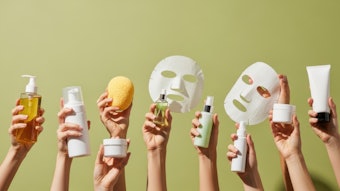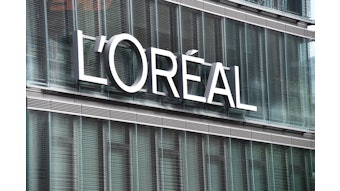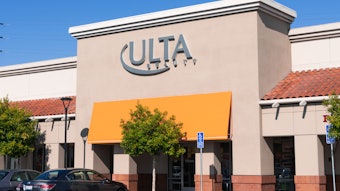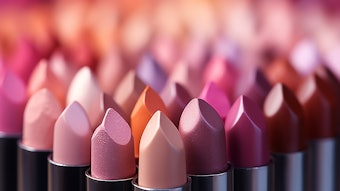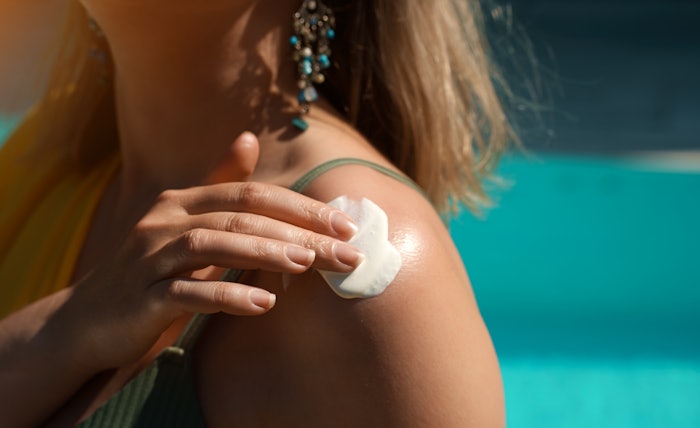
Within the past two weeks, sunscreens have thrust consumer safety into the spotlight on two fronts: the U.S. Food and Drug Administration (FDA) issued several warning letters to brands over unapproved foam and whipped product formats and the Journal of the American Academy of Dermatology (JAAD) highlighted a study (in press) uncovering "hidden" actives present in sunscreen products without proper labeling.
This article is only available to registered users.
Log In to View the Full Article
Within the past two weeks, sunscreens have thrust consumer safety into the spotlight on two fronts: the U.S. Food and Drug Administration (FDA) issued several warning letters to brands over unapproved foam and whipped product formats and the Journal of the American Academy of Dermatology (JAAD) highlighted a study (in press) uncovering "hidden" actives present in sunscreen products without proper labeling.
These developments emphasize the need for compliance and transparency in sunscreen design, while providing the FDA with valuable consumer insights that could be leveraged for broader public health benefits.
Unapproved Sunscreen Forms Cross Monograph Boundaries
FDA letters, dated Aug. 6, 2025, were sent to Supergoop!, Vacation Inc., Kalani Sunwear, K & Care Organics and TiZo’s parent company, Fallene Ltd., citing that mousse, whipped and foam sunscreens do not align with the approved dosage forms under OTC Monograph M020 — making these products misbranded.
Vacation Inc. drew particular scrutiny for packaging that resembled whipped cream canisters. The FDA flagged this design as potentially misleading and posing a risk of accidental ingestion.
Per the monograph, only sunscreens in oil, lotion, cream, gel, butter, paste, ointment, stick, spray and powder forms are approved. Newer foam and whipped formats would require a new drug application approval.
Sunscreen Experts React
Industry expert Kelly Dobos highlighted these warnings letters in a recent social media post, remarking, "I do think there may be legitimate concern about the dispersion of the actives and even application, especially with particulates like ZnO..."
In a separate comment, she continued, "There are a myriad of issues with sunscreen regulations and test method ... In fact, I’m very curious how a foam could be dosed for the SPF or UVA test. [T]he more I think about this, more questions I have…"
Other experts added that these cases are an opportunity for the FDA to revisit the Monograph in light of modern sunscreen formats, especially considering people enjoy using them. This could drive more consistent compliance and support efforts to prevent skin cancer and photodamage.
Researchers Uncover Undisclosed UV Filters
Even more recently, on Aug. 17, an analysis* of 150 of the most popular sunscreens was highlighted in JAAD (in press), reportedly revealing the presence of hidden UV filter chemical analogs not disclosed on product labels.
While additional details of the study are not yet available (as of this writing), a review of the supplementary data revealed:
- more than 50 products containing butyloctyl salicylate,
- 19 containing diethylhexyl syringylidenemalonate (DESM),
- 12 containing ethylhexyl methoxycrylene (EHMC) and
- 4 with ethyl ferulate.
See the full report (when available) for details. Notably, butyloctyl salicylate is not on the FDA monograph as a sunscreen, and ethyl ferulate is not an FDA-approved sunscreen.
Butyloctyl salicylate is described by Hallstar as an SPF booster since it can "help prevent the breakdown of certain UV filters, provide increased solvency, and potentially improve film formation on the skin." These capabilities can enhance sun protection by an SPF of 2 but only when it is combined with other UV filters, per the company.
What's more, to be considered a sunscreen (and require labeling as such), according to Hallstar, the FDA states the ingredient "must contribute 2+ SPF units to a formulation" — and at the recommended use limit (5%), it does not reach this threshold.
*Editor's note: C&T acknowledges that the measurement techniques used, once published, could shed new light on the reported findings.
Acts of Sunscreen 'Doping'?
So are these incidences of hidden sunscreens acts of "sunscreen doping?" Maybe. According to a report by the brand Pavise, which was founded by biomedical engineer Sophie Bai (who reportedly coined the term), there's a difference between SPF boosters and hidden UV filters (aka "doping").
As most formulators know, boosters are inactive and used to help improve the efficacy of actual sunscreens. Doping refers to the intentional use of filters that have the same function as FDA-approved filters but are not approved or labeled as such, and often hidden away in the inactive ingredients section of the label.
"These hidden filters are used most often to supplement the UV protection in '100% mineral' sunscreens," the company states on its website. "[This circumvents] the need for higher percentages of actual mineral UV filters, which can make formulas feel chalky, thick and greasy."
According to Pavise, this allows formulators to create a more cosmetically elegant product that offers comprehensive protection and still supports a 100% mineral product claim. However, Pavise adds, "besides being slightly deceitful, this is a significant safety concern."
Hidden filters have the same or similar structures and functions as FDA-registered chemical UV filters, and the latter have undergone strict toxicity, safety and efficacy testing directing their use levels moderating their disclosure in products.
Interestingly, 30 of the 150 products investigated contained one or more of the listed ingredients — and are promoted as mineral only sunscreens.
Owning Sunscreen Formulation Responsibilities
These developments underscore two key responsibilities when it comes to sunscreen formulating. Formulators must ensure that novel textures like foams and mousses meet regulatory requirements. In addition, they must maintain transparency around active ingredients. The presence of hidden or unlabeled UV filters illustrates the fine line between enhancing product performance and risking noncompliance or consumer safety concerns.
On the regulatory side, these headlines offer insight into how products are being designed and marketed in ways that challenge existing monograph standards. Monitoring the emergence of new product forms and undisclosed actives can guide policy updates, close regulatory gaps and potentially support public health goals.
As the sunscreen market continues to innovate, the lessons from these recent warnings and research findings emphasize that both compliance and transparency are critical for protecting consumers while allowing safe, effective product innovation.



